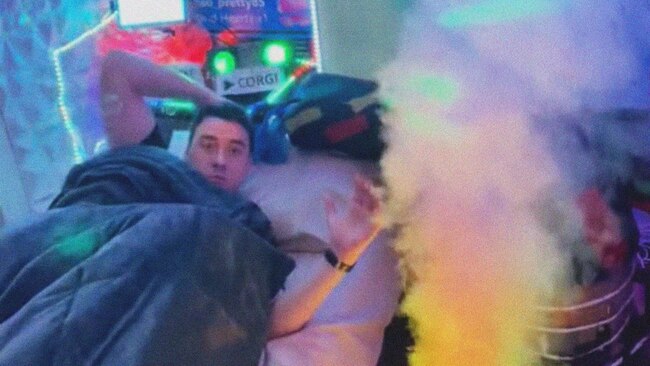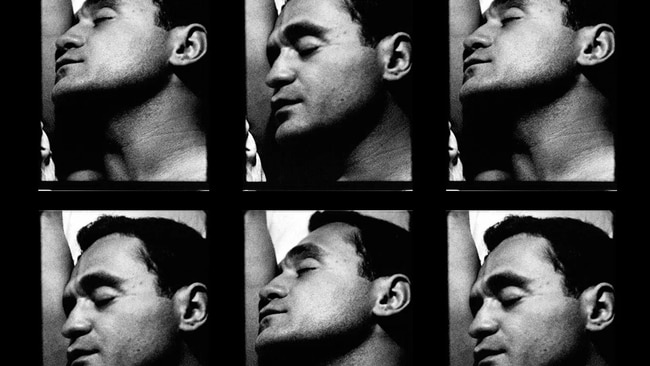Like sleeping on the job? Make $400,000 a year snoozing
On TikTok, dozing has become a lucrative bedroom business. This 28-year-old from the Gold Coast is bringing in more money than most CEOs.

On TikTok, snoozing has become a lucrative bedroom business. This 28-year-old from the Gold Coast is bringing in more money than most CEOs.
Sleep streaming draws a growing online audience and offers a potentially lucrative bedroom business
Just a handful of people reportedly made it through the 1964 premiere of Andy Warhol’s avant-garde film “Sleep.”
It was a real snoozer: five hours and 20 minutes of a man in bed sleeping. Now, it looks like Mr. Warhol was way ahead of his time.

Jakey Boehm has more than a million online followers drawn to roughly the same story line. Every night at 10 p.m., the 28-year-old puts on PJs, climbs into bed, and tosses and turns to an international audience watching on TikTok Live. His monthly take from online fans, he said, averages $US35,000 a month.
Duane Olson, 25, of Hyde Park, N.Y., also does sleep streaming, the name given these online performances, which, depending on the viewer, are as riveting or as tedious as the Yule Log.
“Literally just me sleeping,” reads a sign on Mr. Olson’s headboard. He has an audience of some 13,000 on TikTok.
Catalina Calderon is among those who tune in. “I find it super soothing, like almost as companionship in an odd way,” said Ms. Calderon, 43, of Houston.
“I watch it basically to prep for bed myself.”
Mr. Boehm, who lives on Australia’s Gold Coast, goes a step further. Viewers can buy him virtual gifts that trigger sounds and lights in Mr. Boehm’s bedroom to try to wake him. The viewing experience has a voyeuristic videogame quality—with anonymous watchers paying to startle Mr. Boehm awake as if he were a game character.
In October, a dollar bought Mr. Boehm a “cricket bat,” which triggered a recording of the deranged Jack Nicholson film character in “The Shining,” yelling, “Here’s Johnny!” It was the most popular gift around Halloween, he said.
Another gift turns on a neon sign. For about $US380, a viewer can activate everything in Mr. Boehm’s bedroom for five minutes, raising a nightmarish racket. The payment also alerts everyone on TikTok Live to watch.
“The more chaos the better,” Mr. Boehm said. “The audience loves chaos.”
The sleep-torture gimmick amuses Kyle Hirshon, a 25-year-old TV producer from Commack, N.Y. He said he watches in the morning while getting ready for work.
“I found this guy who was just sleeping on his bed and had a monitor next to him,” Mr. Hirshon said. “People were annoying him waking him up, and I was, like, ‘Oh, that sounds like fun.’ ”
Mr. Hirshon occasionally sends Mr. Boehm a virtual gift. One $US2 purchase, virtual sunglasses, set off a recording of a character yelling “Chrissy wake up!” from the TV show “Stranger Things,” a popular TikTok sound bite.
In exchange for his restless nights, Mr. Boehm keeps a share of the gifts fans buy on TikTok. He said he is using his earnings to save up for a house and to support mental-health charities.
“It’s literally changed my life,” said Mr. Boehm, who was a self-employed web developer.
TikTok, which is owned by Beijing-based ByteDance Ltd., keeps a percentage of the money spent on virtual gifts but doesn’t disclose exactly how much. The percentage TikTok takes is on par with the industry, the company said.
David Beckham kicked off the modern sleep-watching era four decades after Mr. Warhol’s “Sleep.” In a work commissioned for London’s National Portrait Gallery, the soccer star snoozes shirtless throughout a 107-minute video titled “David,” unveiled in 2004.
The genre largely stayed in hibernation until sleep streaming bubbled up on Twitch, Amazon.com Inc.’s live-streaming service, and spread last year to TikTok. In the months since, live streams promoted on TikTok’s hugely popular “For You” page have been delivering more content to more users, ballooning the audience and earnings of top sleep streamers.
The easy money has spawned sleep-stream scammers working undercover. Patrick Moore, a YouTube creator who discusses online culture, is among those sounding the alarm. He recently posted a video about the scams, which, he said, attract kids who don’t realize they are sending money to fakers.
Mr. Olson said some scammers have popped into his live-stream’s comments section and asked viewers to give him donations. But the crooks give Venmo accounts that belong to someone else, he said. Mr. Olson now displays his own account on the headboard sign.
Other scammers record images of sleep streamers on their phones, then pass off the video as their own, hoping to cash in the snores of others. Poor visual quality is a telltale sign of the sham sleepers, according to Mr. Moore.
“A lot of culture on the internet is like, ‘Hey, this is fun that we’re, like, owning this person who’s live streaming,’ ” he said. “But in reality, they’re just farming money.”
The big tip-off is when the ersatz sleepers solicit gifts from viewers and, after the money is sent, nothing happens on-screen.
“That gives us a bad name,” Mr. Boehm said.
Sleep streaming is “already the laziest thing in the world,” Mr. Olson said. “The least you could do is make it authentic.”


